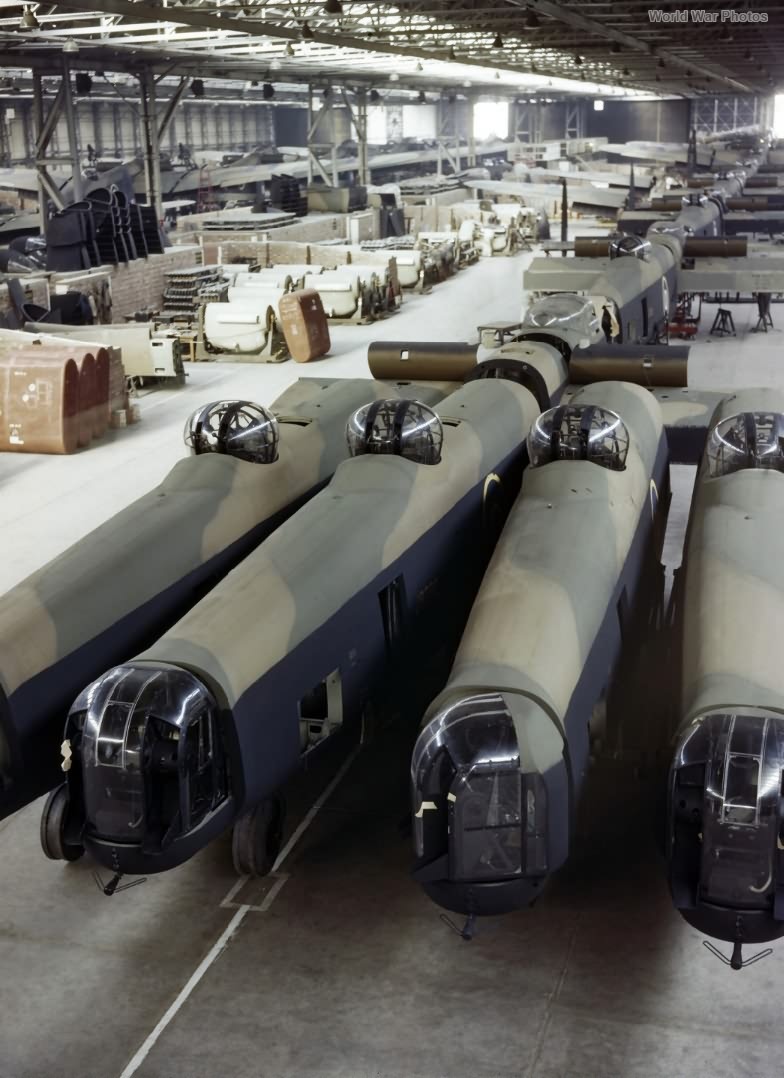Assembly of the Lancaster fuselage begins with the center section, with the floor being the first integral part, designed to bear the weight of the heaviest bombs. The floor is assembled in vertical jigs to save space and allow easy access. The skin is attached to the assembled channel frames, and then the floor is moved to horizontal jigs for assembly with the fuselage U-section hoop-frames, which are produced in a rubber press. Once the frames are in place, formers are added, and the skin is attached in lengthwise panels with flush riveting.
The next stage involves installing all equipment and fittings. A designated line in the workshop ensures that no section can proceed until fully equipped. All drilling and riveting must be completed before this point, so final assembly only requires screwdrivers and pliers. At this stage, the fuselage consists of five main sections:
- The nose section, including the front turret and rudder pedals.
- The front section with the cockpit canopy, sun blinds, pilot’s floor assembly, instruments, and leads.
- The center section, which includes the wing.
- The rear center section with flare tubes.
- The rear section, including the entrance door and dorsal turret.
Electrical equipment is installed, powered by two generators feeding two sets of 24-volt batteries with 48 amps each. The four Rolls-Royce Merlin XX engines are installed in separate power units, each arriving as a complete package with radiator, cowling, and exhausts, ready to be mounted and connected. These engines drive de Havilland Hydromatic three-bladed fully-feathering propellers, 13 feet in diameter. Some Lancasters also use American-made Hamilton Hydromatic propellers, fully interchangeable with the de Havilland ones. The Merlin engine is produced in greater quantities than any other aero-engine globally, ensuring a steady supply for the Lancaster.
Final assembly takes place on the floor, where components from various shops come together. The massive aircraft begins to take shape, standing 20 feet tall on its 8-foot-6-inch diameter wheels. One immediately noticeable feature is the large single bomb compartment, 33 feet long under the fuselage, with two large curved doors that open hydraulically in five seconds. This simplicity in design, as emphasized by Mr. Chadwick, significantly speeds up production.
Electrical circuits connected to the bomb doors ensure bombs cannot be released until the doors are open. An emergency air system is included in case of hydraulic failure. The Lancaster can carry the largest bombs contemplated at the time, such as a 4,000-pound bomb, complemented by a mix of 500-pounders. Alternatively, it can accommodate six 2,000-pound bombs, along with additional 500-pounders as make-weights, highlighting its impressive capabilities as a bomber.
